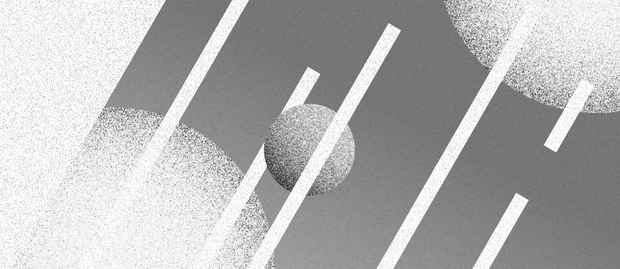
NFT Art Growth & Volume in 2024
While the meteoric rise of NFTs in 2021 captured headlines, 2024 paints a more nuanced picture of the NFT and art market. Gone are the days of frenzied bidding wars and overnight success stories. Instead, the market has undergone a period of consolidation, focusing on long-term value and utility.
Fascinated by the current state of the NFT art market, our team will delve into the challenges, numbers, and factors that define its present and paint its future. So, if you are interested in whether the industry is still worth investing in, this is a perfect opportunity to learn everything you need to know from our analysis.
NFT Art Market and Its Challenges
The initial hype has long subsided, but what comes next? As we mentioned earlier, now is the time for market development and maturity. Main stakeholders will try to revisit some markets not only by keeping them consistent for the time being but also by addressing some existing issues. For instance, here are some of the problems that discourage stakeholders from turning physical art into NFT.
Challenges
Environmental Impact
The energy consumption of popular blockchains, such as Ethereum, is a major concern. This "crypto carbon footprint" deters any environmentally conscious collector and artist and could lead to stricter regulations. However, it is unlikely to completely halt growth. The emergence of energy-efficient blockchains (e.g., Solana) and advancements in existing protocols offer promising solutions.
Market Volatility
The early market was characterized by rapid price fluctuations fueled by speculation. This volatility discourages potential investors seeking stability. While some volatility might persist, the market will offer more artworks created with utility and intrinsic value. Such NFTs can lead to the development of a more stable market and foster a more meaningful collecting experience over time.
Accessibility and Knowledge Gap
The technical complexities of NFTs can be intimidating for new users, limiting the number of people and organizations willing to invest in the NFT market for artists. For instance, museums, which already often struggle with finances, may be hesitant to invest in NFT ventures they don't fully understand. However, this obstacle can be overcome. Educational resources, trial collections, user-friendly platforms, and simplified onboarding processes can bridge this gap and lead to wider adoption.
Copyright and Ownership Issues
Unclear ownership rights and the potential for copyright infringement concerning underlying digital assets create uncertainty for creators and collectors. Some even wonder, “What is NFT art market value, or does it exist at all?” As a result, these issues require clear legal frameworks and enforcement mechanisms. Fortunately, legal discussions and industry initiatives are underway to address these concerns and establish best practices.
Regulation Uncertainty
The lack of established regulations in some regions causes any artist, collector, or gallery to be much more hesitant when it comes to NFT adoption. They remember all too well how, in the early days, plagiarism and fraud were widespread in the NFTs marketplace. Nonetheless, the issue is moving forward as regulatory bodies increasingly acknowledge the need for frameworks. Many entities, including the European Union, have started the development of clear guidelines for the NFT trade. As a result, it can rebuild trust and stability in the market.
Popularity Drop
One factor that can be dealt with easily is the novelty of NFT. Compared to previous years, the media and the general public aren't as interested in the topic. As a result, it will be harder to engage new collectors and grow the market volume without novel or existing news, such as the tokenization of actually famous and desired paintings. Stakeholders who are invested in the industry should encourage such interesting stories or explore other use cases. Otherwise, they risk being overshadowed by new, more popular topics, such as the impact of AI on the art industry, marketing, and other spheres.
Nonetheless, while these challenges can present significant obstacles to the market's growth, they are not absolute roadblocks. They won't be able to halt the growth of the digital art NFT market, especially if the industry finds the right solutions. For instance, it is already seeking ways to advance in technology and legal frameworks. In fact, addressing at least these challenges could lead to a more sustainable, secure market in the long run, and revive interest in the benefits of NFT art.
NFT Digital Art Market Volume in 2024
Despite a significant decrease in active traders compared to 2022, the overall NFT art market size has since grown steadily. This suggests a shift towards a more engaged collector base, prioritizing curated collections and projects with strong fundamentals. Market research firm Statista projects revenue in the NFT digital art market to reach $2.38 billion in 2024, indicating a trend of continued growth, albeit at a more measured pace.
The emphasis has shifted from viewing NFTs purely as speculative investments to recognizing them as assets offering tangible benefits and experiences. Blue-chip artwork NFT sales remain popular, but projects with integrated utilities like access to exclusive content, community events, or even fractional ownership of physical artwork are gaining traction.
Blockchain Diversification
As our analysis suggests, Ethereum remains a dominant player, but alternative blockchains like Solana are attracting artists and collectors due to lower transaction fees and faster speeds. This diversification fosters a more competitive art landscape and potentially lowers barriers to entry for new creators.
Non-Fungible Art Market Growth in 2024
The Non-Fungible art market is expected to continue growing in 2024, though at a more moderate pace compared to the explosive growth of previous years.
For instance, analysts forecast a Compound Annual Growth Rate (CAGR) of around 9-11% for the NFTs art market between 2024 and 2028. This means the market could reach a value of $3.282 billion by 2027.
With a focus on utility, community building, and a broader blockchain ecosystem, the future of NFT art appears bright. As technology evolves and regulations are established, mainstream adoption and more diverse methods to market NFT art are likely to emerge in the coming years.
Related articles





